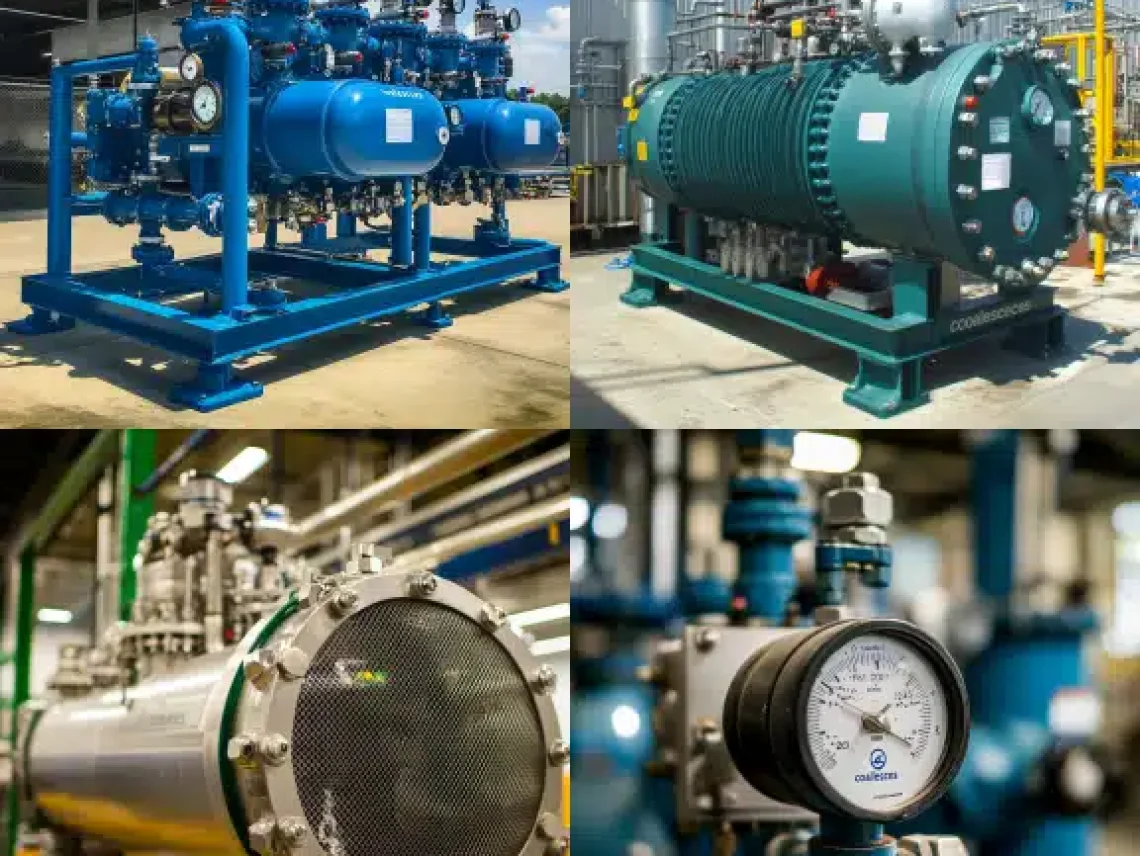
Table of Contents
ToggleWhen maintaining the efficiency and reliability of industrial systems, a coalescer plays a crucial role. But what exactly is a coalescer, and why is it so important in various industries? At Red River, we believe understanding the fundamentals of a coalescer is key to optimizing your operations and enhancing your equipment’s durability.
A coalescer is a tool designed to separate immiscible liquids, like oil and water, or to remove fine debris from gases. It works by merging small droplets (or “coalescing” them) into larger ones, making it easier to eliminate contaminants. This process is vital in industries such as oil and gas, where precision and reliability are essential for operational success.
In filtration systems, coalescers operate by passing mixtures through a filter medium that encourages small droplets or particles to combine. As these droplets merge into larger clusters, they become easier to remove. This process not only improves filtration but also enhances operational efficiency. Moreover, by eliminating contaminants effectively, coalescers minimize system maintenance needs, reduce charges, and ensure smoother operations.
Coalescers come in various forms to meet the demands of specific industries. The two most common types include:
Coalescers play an indispensable role in oil and gas operations. By efficiently separating water from crude oil, they protect equipment and improve product quality. Furthermore, their ability to enhance separation processes extends the lifespan of equipment, reduces maintenance demands, and lowers operational costs.
In liquid-liquid separation, coalescers achieve the target purity levels required for various industrial processes. Whether removing water from gasoline or managing chemical separations, they ensure high product quality while addressing operational challenges effectively.
The benefits of coalescers extend beyond their separation capabilities. They enhance filtration performance, lower maintenance frequency, and increase operational efficiency. By maintaining clean and consistent outputs, coalescers provide reliable performance across diverse industrial applications.
When selecting a coalescer, it is crucial to identify the type of separation required—whether liquid-liquid or gas-liquid. Factors such as droplet size, operating conditions (including temperature and pressure), and fluid composition significantly influence the choice. Additionally, evaluating material compatibility and maintenance requirements ensures long-term efficiency and cost-effectiveness.
Implementing a coalescer often involves challenges such as clogging, inefficiencies in separation, or increased maintenance needs. These issues frequently arise due to improper sizing, unsuitable filter media, or fluctuating operating conditions. However, these challenges can be mitigated by careful system design, routine inspections, and selecting a coalescer tailored to specific industrial needs. Addressing these factors early ensures seamless operations and extends the lifespan of the system.
Coalescers are crafted from materials that resist the demands of their specific applications. Commonly used materials include stainless steel for its corrosion resistance and durability, polypropylene for lightweight operations, and fiberglass for effective filtration. Elastomers are also popular when flexibility and chemical resistance are needed. Choosing the right material depends on fluid properties like temperature, pressure, and chemical composition.
The replacement and maintenance frequency of a coalescer depends on its workload and operating environment. Systems under heavy use or harsh conditions may require replacements every few months. Conversely, in controlled environments, coalescers can last for several years. Regular monitoring for clogging, pressure drops, or reduced filtration performance is critical. Early detection of these issues allows for timely cleaning or replacement, ensuring uninterrupted system efficiency.
Yes, coalescers are designed to manage both types of separation:
The choice depends on the specific separation needs and the fluid composition being processed.
A coalescer that isn’t functioning properly often exhibits:
These issues compromise system reliability and should prompt immediate maintenance or replacement to restore performance.
Coalescers play a vital role in reducing environmental impact. By removing harmful substances like water or contaminants from fluids before disposal, they lower the risk of pollution. For instance, coalescers used in crude oil processing separate water from oil, ensuring cleaner outputs. Their efficiency in minimizing waste and emissions helps industries comply with environmental regulations while promoting sustainability.
Table of Contents
ToggleIn the realm of industrial solutions, Red River emerges as a pioneer, offering a diverse range of custom-engineered products and facilities. Among our specialties is the design and production of Custom/OEM Pressure Vessels, meticulously crafted to meet individual client requirements, ensuring performance under various pressure conditions. Our expertise extends to the domain of prefabrication, where Red River leads with distinction.
The company excels in creating prefabricated facilities, modules, and packages, reinforcing its stance as a forerunner in innovation and quality. This proficiency is further mirrored in their Modular Skids offering, where they provide an array of Modular Fabricated Skid Packages and Packaged equipment. Each piece is tailored to client specifications, underlining their commitment to delivering precision and excellence in every project they undertake.